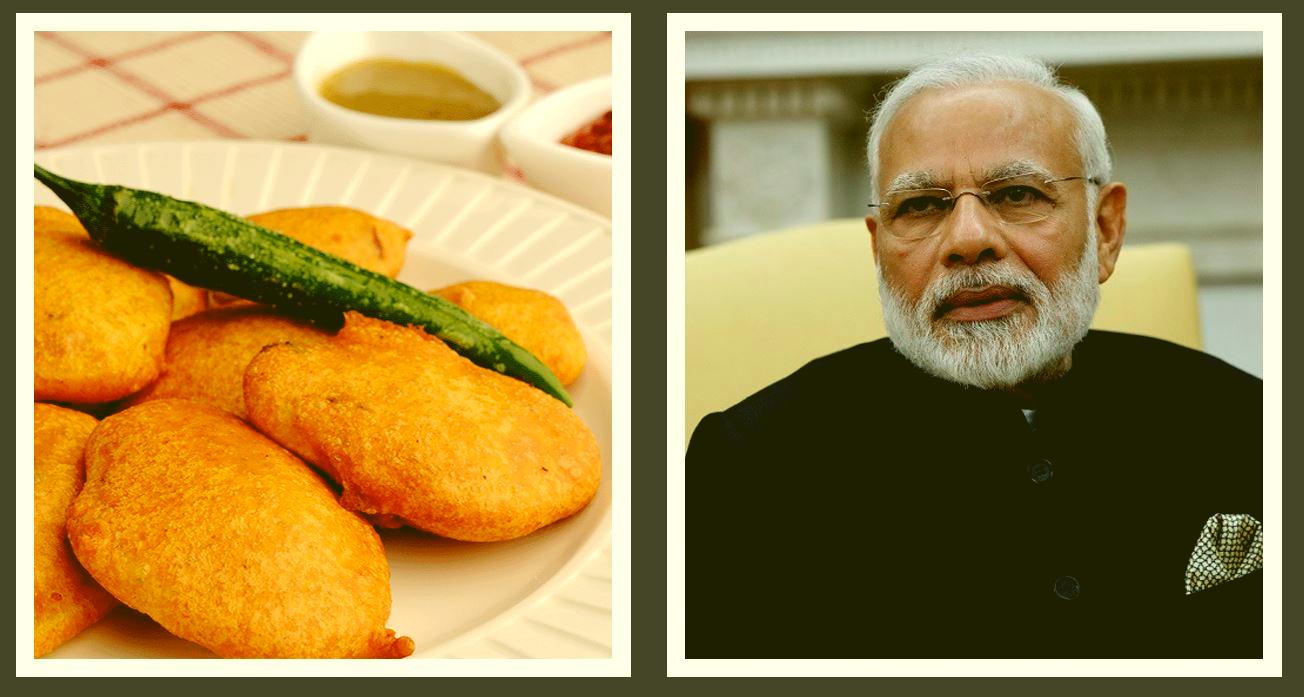Pakoda economics is not just a midnight thought for Modi. There is a certain method in it. Before coming to power, Modi had promised to create one crore new jobs every year if his party was voted to power. But the target turned out to be a line drawn in water. According to official data, in 2016-17, only 4.1 lakh jobs were created, which is not even 5 percent of what was promised. In four years of Modi government’s rule, the unemployment rate has registered an increase as the economy got caught in the tailspin of monetisation and GST hiccups. Here’s an analysis, for Different Truths.
Conclusions of a global survey on jobs by Gallup are set to further embarrass the Modi government in the ‘pakoda’ debate. And the timing of the report provides the least comfort to the government as its record in creating new jobs is facing scrutiny in an election year. Modi’s suggestion recently that people selling pakodas and earning Rs 200 a day must also be counted as gainfully employed had created a storm, with former finance minister P Chidambaram butting in with his caustic remark that by the same logic begging could also be considered as employment. Modi’s comment, which many considered outrageous, led to a barrage of protests.
In this context, the Gallup report, published this week, has conclusions that nail Modi’s assertions. Citing the fallacy in official records on unemployment, the report points out how ‘people selling trinkets on the street in India’ are considered having jobs. “Though their work is hardly meeting their needs, they still have what global agencies define as work. They are officially self-employed, which means they are not unemployed,” writes Jon Clifton, managing partner of Gallup in a briefing on the global survey, which covered 140 countries.
According to the briefing, so many of the truly unemployed are considered self-employed. “In the developing world, the self-employed makeup roughly 30% of the workforce. This can be confusing because when we hear “self-employed,” terms such as “small-business owner” or “entrepreneur” come to mind. However, most of those categorized as self-employed in the developing world aren’t small-business owners or entrepreneurs. When you look at who lives on less than $2 a day, the self-employed appear almost identical to the unemployed. This is because most of these self-employed jobs aren’t real jobs,” it says. The report does not mention pakoda sellers, but the categories considered for the comparison are better off than them.
Gallup deals with the issue in the context of exploring the real situation with regard to unemployment in the world. It says the real unemployment rate in the world is not 6 percent, as mentioned in official records, but 33 percent. The survey considered at least 30 hours of work per week with a pay cheque from an employer as constituting a good job. Based on this definition, 1.4 billion out of the world’s roughly 5 billion adults have a good job.
Discussing the case of the other 3.6 billion, the survey says that about 1 billion people are self-employed; about 300 million work part time and do not want full-time work; about 400 million work part-time but want full-time work; 260 million are unemployed, and the rest are out of the workforce. “Not all of the self-employed are hopelessly unemployed, but we can conservatively estimate that at least half of them are. Those 500 million added to the 400 million part-time workers who want full-time work and the unemployed total roughly 1 billion people who are truly unemployed. That figure of about 1 billion, which is just shy of one-third of the entire world’s adult workforce of 3.3 billion, would put global unemployment closer to 33% than to the 5.6% that the ILO estimates,” it argues.
Pakoda economics is not just a midnight thought for Modi. There is a certain method in it. Before coming to power, Modi had promised to create one crore new jobs every year if his party was voted to power. But the target turned out to be a line drawn in water. According to official data, in 2016-17, only 4.1 lakh jobs were created, which is not even 5 percent of what was promised. In four years of Modi government’s rule, the unemployment rate has registered an increase as the economy got caught in the tailspin of monetisation and GST hiccups. There has been a clear shift in the pattern of employment from permanent jobs to casual and contract jobs. The temporary nature of work obviously had an adverse effect on the level of wages, the stability of employment, and social security.
The government claims that it has provided assistance to 7.2 crore youth under self-employment schemes. If what these people do with that money can be categorised as employment, suddenly the job creation numbers would appear respectable and it would suggest that the government has even performed better than promised. That is the catch in the pakoda argument. A magic created through sleight of hand.
The UPA government had done a similar trick to show improved poverty alleviation. It lowered the bar on the definition of the poverty line, which suddenly lifted a large section of poor people above poverty levels. The then Planning Commission tweaked the numbers so that people whose consumption of goods and services exceeded Rs 33 in cities and Rs 27 per capita per day in villages were no longer considered poor.
The government can call the poor and unemployed by any other name, but that is not going to change the conditions in which they live.
K Raveendran
©IPA Service
Photos from the Internet
#PakodaBluff #GlobalUnemployment #GST #IndianGovernment #EconomyOfIndia #PakodaEconomy #DifferentTruths






 By
By

